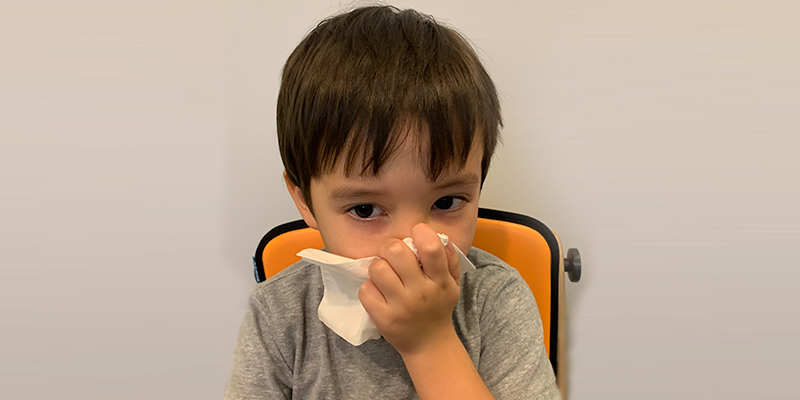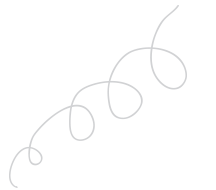
As a Pediatric Speech Therapist, I am privileged to work with children in various educational settings, including schools and nurseries. I often notice children who do not know how to clear their runny nose, prompting me to wonder why nasal hygiene has not received the same attention as dental or hand hygiene. Educators have long taught children how to brush their teeth and wash their hands properly, and have only recently started teaching them about sneeze etiquette to help limit the spread of COVID-19. While this is a good start, I believe that nasal hygiene education is still in its infancy.
While the health hazards of cavities are well-known, few people seem to be aware of the health hazards that accompany nose breathing difficulties. Mouth breathing, for instance, may cause permanent alterations in the facial muscles and bones of a child. Moreover, Santoro et al, 2021 state that “healthy humans are predominantly nose-breathing at rest. The nose and nasal mucosa play an essential role in maintaining healthy airways by entrapping inhaled airborne aggressors such as pollutants, pollen and infectious viruses, as well as heating and humidifying inhaled air. This prevents irritation or damage to delicate distal pulmonary tissues and allows the lungs to work efficiently.” They also add: “failure to clear noxious stimuli from the upper respiratory system can lead to an increased risk of infection or allergic response, and has been linked to long-term, chronic conditions of the lungs and other organs. Thus, it is important to keep the nose functioning effectively to control diseases of the lungs and support overall health”. However, most children ignore such vital information.
In my sessions, I always teach children experiencing a runny nose how to clear their nose well with a tissue so their nasal cavity is not blocked, how to properly dispose of the used tissue, and how to wash their hands properly with soap or to use a hand sanitizer if water and soap are not available. Often, children of all ages simply wipe their nose on whatever they can find, be it a T-shirt or their hand, without properly clearing the nasal cavity, promoting infections while delaying their own healing. It is hence crucial for both parents and educators to nurture nasal hygiene at home and at school, much like dental and hand hygiene are. This would not only promote optimal, long-term health among children, but it would also reduce the number of respiratory infections in the short-term.
A study by Costa et al, 2019 looked at the effects of a ‘playful intervention’ on nasal hygiene practices of preschoolers. During their experiments, nurses conducted two intervention sessions using strategies like a puppet story, sequence cards and role-play. By the end of their research, the results were statistically significant and positive improvements were observed in the children’s behaviors: forcing the air out of one nostril increased from 5.1%to 30.8%, forcing the air out of the other nostril increased from 5.1% to 28.2%, disposing the used tissue in the garbage increased from 53.8% to 87.21%, and washing hands with soap and water increased from 15.4% to 43.6%.
While mouth breathing caused by colds and flu is a temporary condition, other pathologies like allergies, enlarged tonsils and adenoids may cause a longer lasting or even permanent condition. It is critical to consult an ENT physician to determine the cause of mouth breathing and address it immediately. Common facial characteristics of mouth breathers are lowered jaw and tongue positioning, dry lips, and dark circles. At night mouth breathing may cause snoring or sleep apnea. If mouth breathing persists, the child will require the support of a multi-disciplinary team: ENT, orthodontist, and speech therapist. The ENT will focus on treating the cause of mouth breathing, the orthodontist will concentrate on improving oral and dental structures, and the speech therapist will work on improving muscle tone and functions such as chewing and swallowing.
At this point you might be asking yourself how speech difficulties are related to mouth breathing. To have good speech we need to have our ‘speech helpers’ in optimal shape: tongue, teeth, palate, cheeks, and lips. Breathing through our nose helps shape the oral cavity (palate and teeth) and maintains optimal muscle strength and mobility. Mouth breathing causes oral muscle weaknesses and can negatively impact speech production and other oral functions such as chewing and swallowing. If you have any other questions about this topic, please feel free to contact our speech and language therapy team.
Sources:
- Santoro, E., Kalita, P. & Novak, P. The role of saline nasal sprays or drops in nasal hygiene: a review of evidence and clinical perspectives. In: Rhinology Online, Vol. 4, 2021.
- Costa, P, Ermini, T. & Sigaud, C. Effects of an educational playful intervention on nasal hygiene behaviors of pre-schoolers: a quasi-experimental study. In: Health Promotion Perspectives, 2019.





